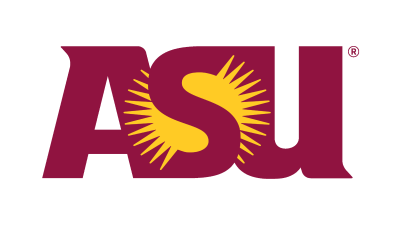

Arizona State University (Tempe campus)
Electrical Engineering (Media Arts and Sciences), MS
Study detals
: Master's degree : Electrical Engineering (Media Arts and Sciences), MS ESAMEMS : Full time : 24 MonthRequirements
- Applicants must fulfill the requirements of both the Graduate College and the Ira A. Fulton Schools of Engineering.
- Applicants are eligible to apply to the program if they have earned a bachelor's or master's degree in any field from a regionally accredited institution.
- Students from ABET-accredited undergraduate programs who wish to be considered for a master's degree program must have a minimum GPA of 3.00 (scale is 4.00 = "A") in the last two years of undergraduate coursework. Students from undergraduate programs that are not accredited by ABET must have a minimum GPA of 3.50 (scale is 4.00 = "A") in the last two years of undergraduate coursework or have graduated first class with distinction.
All applicants must submit:
- graduate admission application and application fee
- official transcripts
- statement of purpose
- curriculum vitae
- three letters of recommendation
- proof of English proficiency
Additional Application Information
An applicant whose native language is not English must provide proof of English proficiency (TOEFL 80 (no band below 20) (IELTS 6.5 at least 6.0 in all skills)) regardless of their current residency.
International applicants seeking teaching assistantships must demonstrate proficiency in spoken English by scoring at least 26 on the speaking portion of the internet-based TOEFL or 50 on the ASU-administered Speaking Proficiency English Assessment Kit.
Applicants should submit materials that reflect the hybrid nature of the arts and engineering degree, including a statement of purpose and curriculum vitae demonstrating interest and relevant experience in the area. Applicants will have the opportunity to upload their curriculum vitae and statement of purpose when completing the online application. Additionally, the media arts and sciences program requires three letters of recommendation from individuals familiar with the applicant's ability to succeed in a transdisciplinary research environment.
Speciality
This program may be eligible for an Optional Practical Training extension for up to 24 months. This OPT work authorization period may help international students gain skills and experience in the U.S. Those interested in an OPT extension should review ASU degrees that qualify for the STEM-OPT extension at ASU's International Students and Scholars Center website.
The OPT extension only applies to students on an F-1 visa and does not apply to students completing a degree through ASU Online.
Additional information
Program description
Degree awarded: MS Electrical Engineering (Media Arts and Sciences)
This concentration in media arts and sciences in the MS program in electrical engineering is a collaboration between the electrical engineering program at ASU and the Herberger Institute for Design and the Arts. It is available for MS and PhD students admitted to this program who take two-thirds of their course, research and thesis credits from the electrical engineering program, and one-third from the media arts and sciences program.
Electrical engineering students in the media arts and sciences concentration undergo training toward integrating principles of digital signal processing, pattern recognition, computer vision and multimedia computing with transdisciplinary objectives, with the goal of enabling new paradigms of human-machine experience that directly address societal needs and facilitate knowledge. Examples include media-based intelligent systems for health care and well-being, and promotion of environmentally sustainable practices.
Graduates are able to apply new ideas, theories and systems related to the intersection of media arts and electrical engineering. The transdisciplinary nature of this program allows media arts and sciences graduates to connect electrical engineering signals and systems constructs to multimedia computing, digital communication, immersive augmented reality and virtual reality experiences, and data visualization.
Career examples include:
- augmented and virtual reality researcher
- computer systems engineer
- electrical engineering professor
- systems software engineer